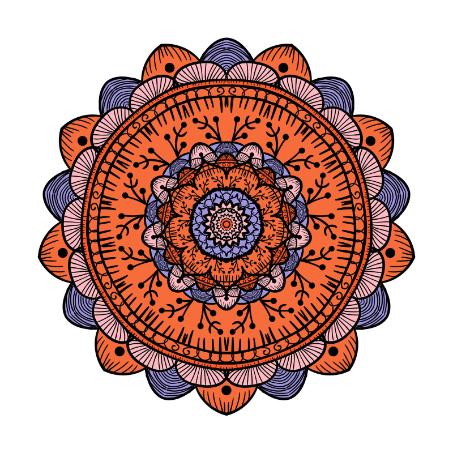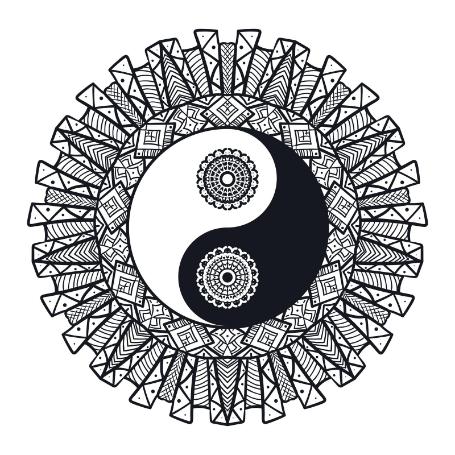A mandala is a complex and symmetrical geometric design that encompasses a circular form and is often rich in symbolic meaning. Derived from the Sanskrit word for “circle,” mandalas have been used throughout history in a variety of spiritual and cultural contexts, primarily within Hinduism and Buddhism. They serve as spiritual symbols and tools for meditation, representing the universe and the intricate web of life contained within it.

The basic structure of a mandala is a square with four gates containing a circle with a center point. Each geometric shape within the mandala is symbolic, reflecting a myriad of philosophical concepts and natural elements. The center of the mandala is often considered the starting point of contemplation, a guide to the cosmos or a higher state of consciousness. Surrounding layers may contain images of deities, intricate patterns, or symbols that represent different aspects of the universe and philosophical teachings.
Historically, mandalas were not only created as meditation aids but also used in various religious rituals and ceremonies, particularly in the Buddhist and Hindu traditions. They were meticulously crafted from colored sands, as seen in Tibetan Buddhism, or drawn on paper or fabric, as in Hindu practices. The creation of a sand mandala, for example, involves multiple monks working together to place millions of grains of sand in a specific, sacred arrangement. This process is deeply meditative and is considered a ritual of purification and healing.

In psychological terms, Carl Jung introduced mandalas to Western thought as a means to promote psychological balance and self-integration. He believed that mandalas symbolize the totality of the self and saw their creation as a form of therapy, allowing individuals to express subconscious thoughts in a non-verbal way. According to Jung, the act of drawingDrawing is a foundational art form that involves creating images on a surface, typically paper, using tools such as pencils, pens, and charcoal. It is a versatile medium that allows artists to express ideas, emotions, and stories through lines, shapes, and shading. Historical Background • Prehistoric Beginnings: The earliest known drawings date back to prehistoric times, with cave drawings found More mandalas helps to harmonize the mind and unearth hidden areas of the psyche.
Today, mandalas have been embraced in popular culture and art therapy. They are recognized for their therapeutic properties, particularly in stress reduction and focus improvement. Many people engage in mandala coloring as a relaxing activity that provides a temporary escape from stress. It is an exercise that fosters creativity and provides psychological relief by focusing the mind on the present moment and minimizing distractions.
The appeal of mandalas extends beyond their traditional and psychological uses. They are frequently featured in modern home decor and fashion, in forms ranging from wall art and jewelry to tattoo designs. In each adaptation, they carry a piece of their spiritual and healing essence, serving as reminders of balance, harmony, and personal well-being.
Whether used for spiritual depth, psychological healing, or purely for their aesthetic beauty, mandalas continue to be a powerful symbol across various cultures and disciplines. Their ability to resonate on multiple levels—spiritual, therapeutic, and artistic—makes them a timeless element in both traditional ceremonies and modern everyday life.

Sources:
Curry, N. A., & Kasser, T. (2005). Can coloring mandalas reduce anxiety?. Art Therapy, Taylor & Francis.
GearBunch. (n.d.). Mandala Fashion and How to Wear the Trend. Retrieved from GearBunch
Read more on Mandala and Meaning:
Mandala and Meaning: The History and Significance of Mandalas
